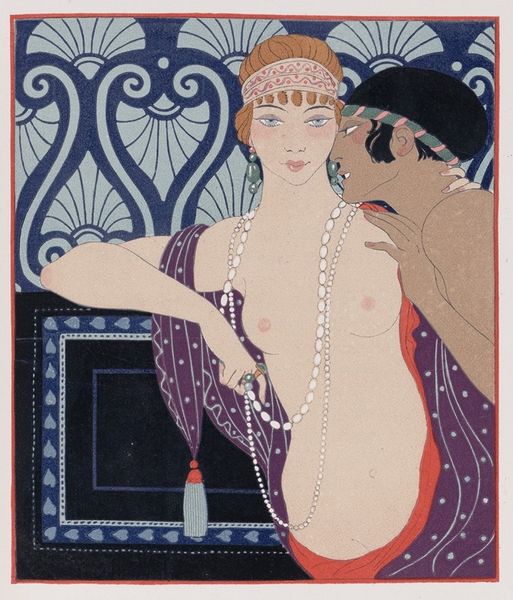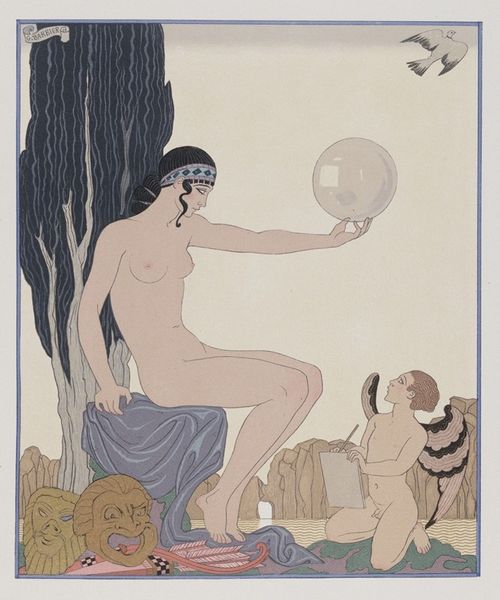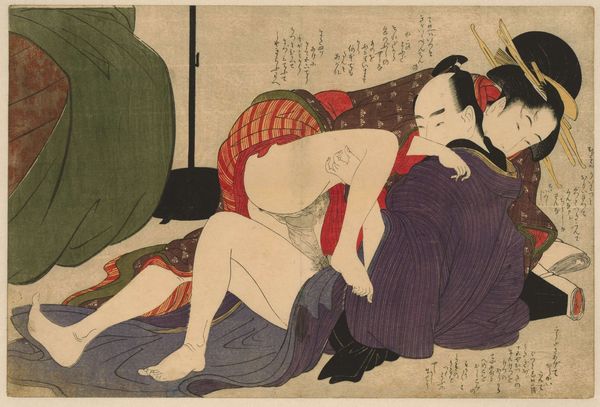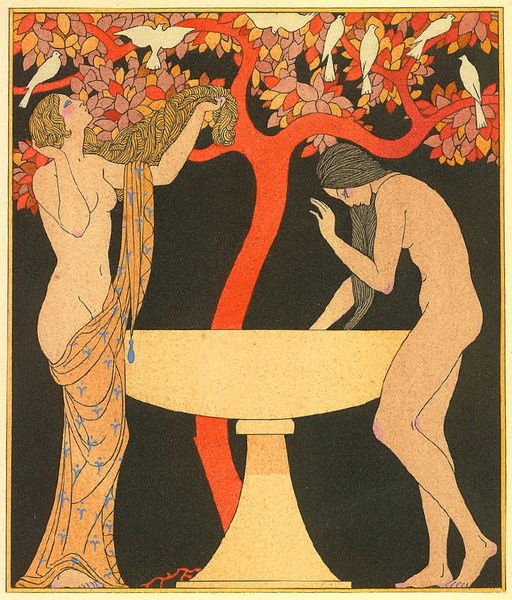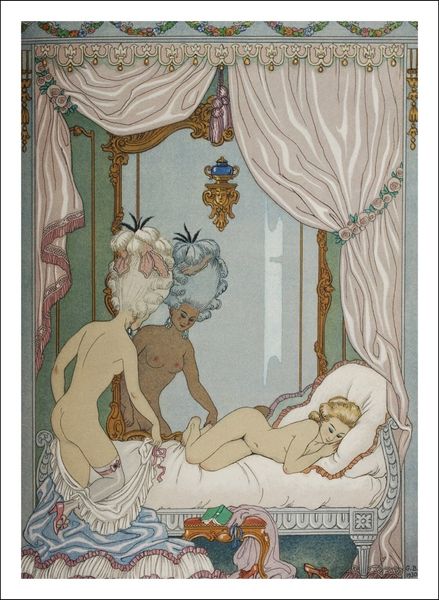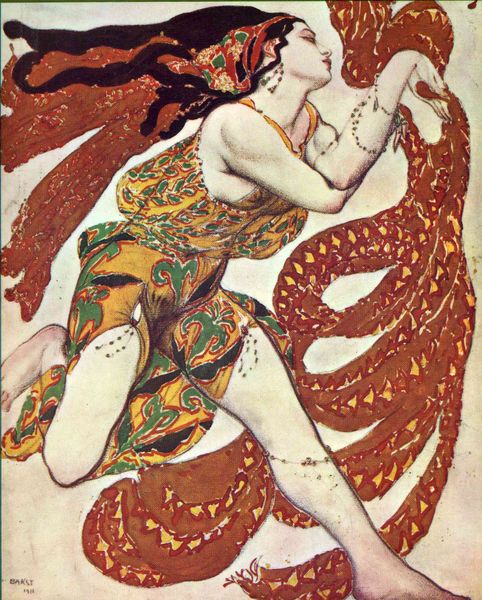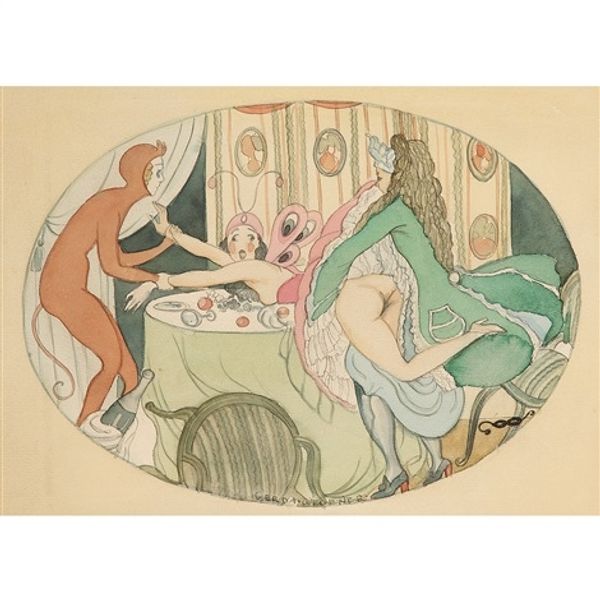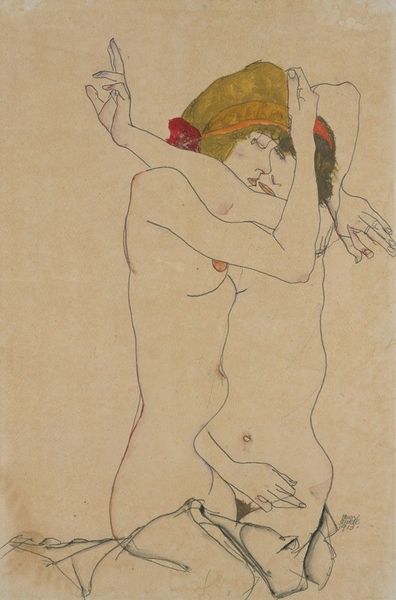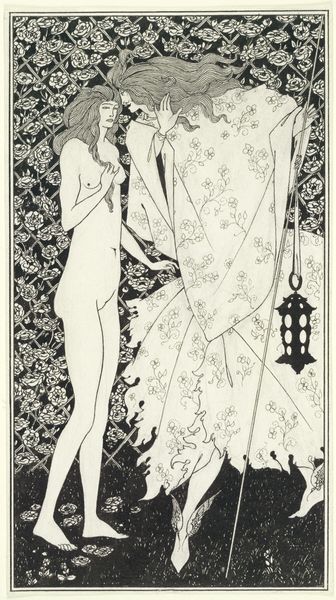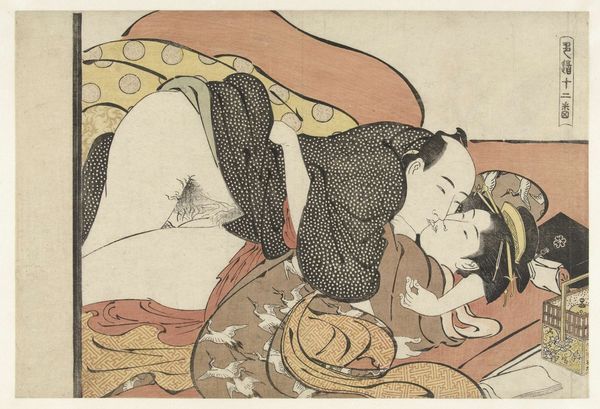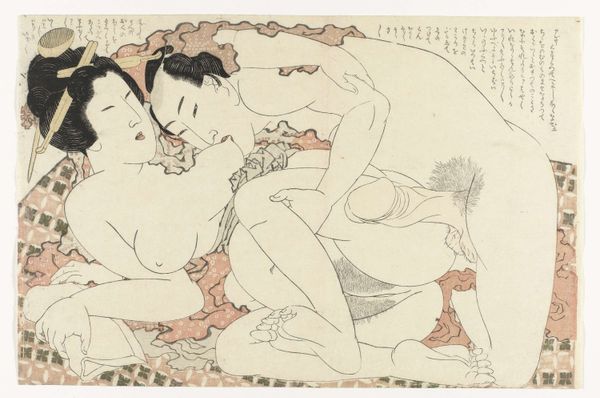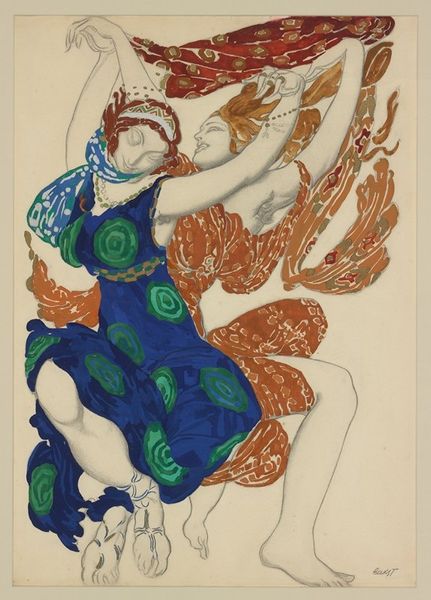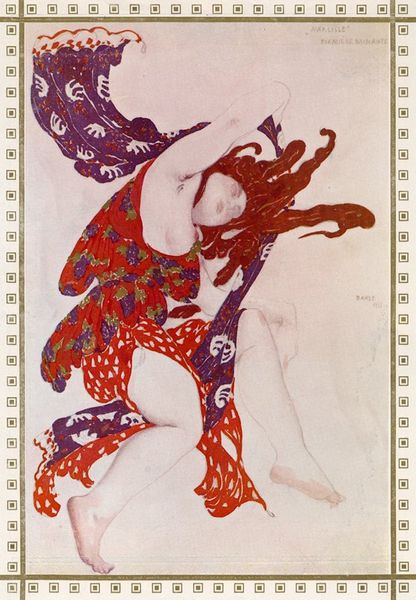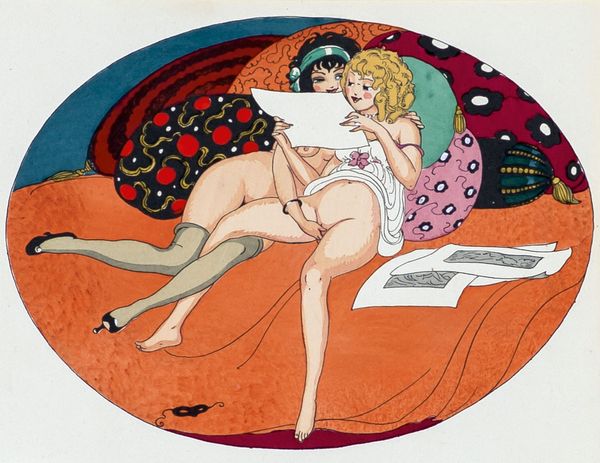
Copyright: Public domain
Curator: Welcome. Let's consider George Barbier’s “The Songs of Bilitis,” a piece completed in 1922, during the height of the Art Deco movement. Editor: It's immediately striking how ornamental this composition is! The flat planes of color and stylized figures evoke such a unique atmosphere. Sensual and strange. Curator: Absolutely. Barbier synthesizes classical and modern sensibilities. Note the influence of ancient Greek decorative motifs: the meander pattern at the top, the statue to the left. How might these stylistic elements serve to frame or influence our reading? Editor: They certainly create a world outside of time. “Bilitis” was a series of erotic poems presented as translations from a fictional Greek courtesan; given that context, the decorative aspects naturalize colonial projections of exotic sensuality. It raises questions about Orientalism and the male gaze. Curator: That's a potent reading. I'm more drawn to how Barbier uses color to construct meaning. The contrasting warm and cool tones—the vibrant red against the subdued blues—create tension, yet also harmony. And consider how the linearity controls the representation. Editor: True, but look closer! Those erotic poses—they are rendered as an invitation to the voyeuristic, male spectator. This image perpetuates tropes about female desire and submission rooted in oppressive power dynamics. The poem cycle was a hoax by a male author who wanted an audience for his erotic poetry... Curator: Fascinating points that force us to really consider Barbier's aesthetic. Editor: Art has power. Looking critically at work like Barbier’s means uncovering both pleasure and insidious assumptions within the surface of beauty. Curator: Indeed, such careful attention encourages deeper thought.
Comments
No comments
Be the first to comment and join the conversation on the ultimate creative platform.
